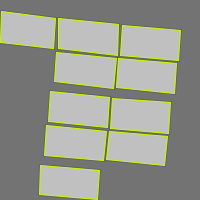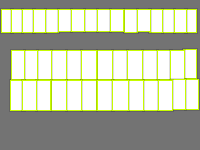Solar panels rgb Computer Vision Project
Updated 2 years ago
320
views12
downloadsMetrics
Here are a few use cases for this project:
-
Maintenance Monitoring: This model could be implemented in drones or satellite imaging systems to monitor the cleanliness of large solar panel installations. These systems could regularly analyze the status of the panels and notify maintenance staff when cleaning is required to maintain optimal efficiency.
-
Efficiency Optimization: Determining how much grime or dirt is on a solar panel can help estimate the reduction in efficiency. Using this model, energy companies can better plan cleanups to optimize energy production.
-
Damage Detection: The identification of dirt and grime on panels can also potentially assist in detecting physical damage or irregularities that could be a sign of bigger issues.
-
Automated Cleaning: Autonomous cleaning robots could utilize this model to identify dirty panels in real time and target specific areas that need to be cleaned, improving their efficiency and effectiveness.
-
Environmental Impact Studies: By identifying dirty solar panels, environmental scientists and researchers can analyze patterns, such as dust deposition over time or environmental impact, that might help in furthering research on solar panel placement strategies and environmental adjustments.
Use This Trained Model
Try it in your browser, or deploy via our Hosted Inference API and other deployment methods.
Cite This Project
If you use this dataset in a research paper, please cite it using the following BibTeX:
@misc{
solar-panels-rgb_dataset,
title = { Solar panels rgb Dataset },
type = { Open Source Dataset },
author = { earthbook },
howpublished = { \url{ https://universe.roboflow.com/earthbook-zdvbx/solar-panels-rgb } },
url = { https://universe.roboflow.com/earthbook-zdvbx/solar-panels-rgb },
journal = { Roboflow Universe },
publisher = { Roboflow },
year = { 2023 },
month = { jan },
note = { visited on 2025-03-04 },
}
















